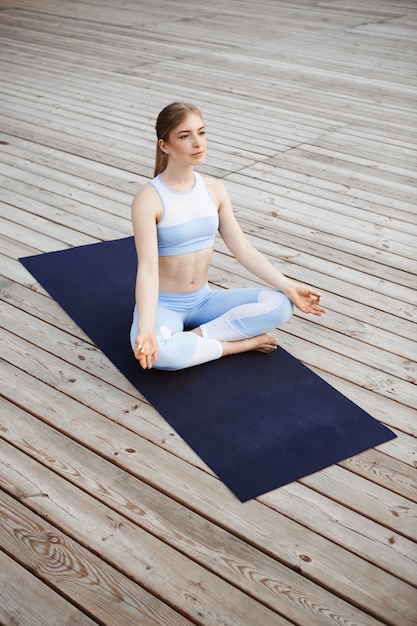
Yoga goes beyond just flexible limbs; it can genuinely enhance your memory, heart, and bone health. In the UK, we are spending a whopping £790 million annually on yoga classes and mats.
While yoga has taken some quirky turns – think rage yoga, naked yoga, paddleboard or horseback yoga, and even yoga with dogs – its true benefits are increasingly backed by science. Researchers at UCLA discovered that a three-month yoga and meditation course was more effective than memory exercises in minimizing age-related brain decline. Additionally, yoga improved sleep quality in breast cancer survivors.
Lucy Edge, a former advertising executive, turned to yoga during a deep depression instead of taking prescribed anti-depressants. After a six-month break to study yoga in India, she returned happier and wrote three books on the subject. She also founded Yoga Meds, which lists over 300 clinical trials showing yoga’s benefits for various conditions like arthritis, insomnia, and obesity.
If you’ve only done crosswords and Sudoku for mental exercise, yoga might be the next step. The UCLA study showed that 12 weeks of yoga and meditation improved spatial and visual memory, reduced depression and anxiety, and increased stress resilience in adults over 55. Although the study was small, Dr. Clare Walton of the Alzheimer’s Society emphasized the need for more research into yoga’s benefits for brain and heart health.
To get started, you don’t need to do complex poses. In the study, participants practiced one hour of Kundalini yoga per week and 20 minutes daily of Kirtan Kriya meditation, which involves chanting, hand movements, and visualizing light.
Yoga is also beneficial for your heart. A systematic review in 2014 showed yoga might reduce heart disease risk as effectively as brisk walking. Stress, a significant factor in heart disease, can be mitigated through yoga, which positively affects blood pressure, cholesterol, and weight.
For stress reduction, Charlotte Watts recommends gentle yoga poses for beginners, while Anna Ashby suggests Restorative yoga, where poses are supported on bolsters and cushions, giving your nervous system a break. Sarah Shone, a physiotherapist and yoga teacher, incorporated yoga into back pain rehabilitation programs, with 87% of participants experiencing pain reduction.
Yoga also helps with incontinence by strengthening pelvic floor muscles and is weight-bearing, which increases bone density. Choose gentle styles like Hatha or Iyengar yoga, especially if you have health concerns. Consult your doctor about subsidized yoga courses if you have specific conditions like back pain.
For those new to yoga, investing in a good yoga mat is essential. Consider factors like where you’ll use it, its weight, and your height. A thicker mat can protect your joints and provide comfort. Healthista recommends the Elephant Cork Yoga mat from Valka Yoga, £69.95, which is eco-friendly, durable, and features an eye-catching design. Cork mats are great for grip, especially during hot yoga, and are antimicrobial and odor-resistant.
Adding a cork yoga block can help with more challenging poses, offering stability and extra length where needed. Regardless of your flexibility, yoga is accessible and beneficial.
For beginners, consider:
– Yin or Restorative yoga for a gentle, calming experience.
– Vinyasa Flow for an energetic, breath-linked sequence.
– Iyengar yoga for precise, alignment-focused postures with props.
– Anusara yoga for alignment with flowing movements and upbeat music.
– Yoga Therapy, led by trained teachers, for healing injuries or illnesses.
Lucy Edge’s latest book, “Down Dog Billionaire,” is available on Amazon.